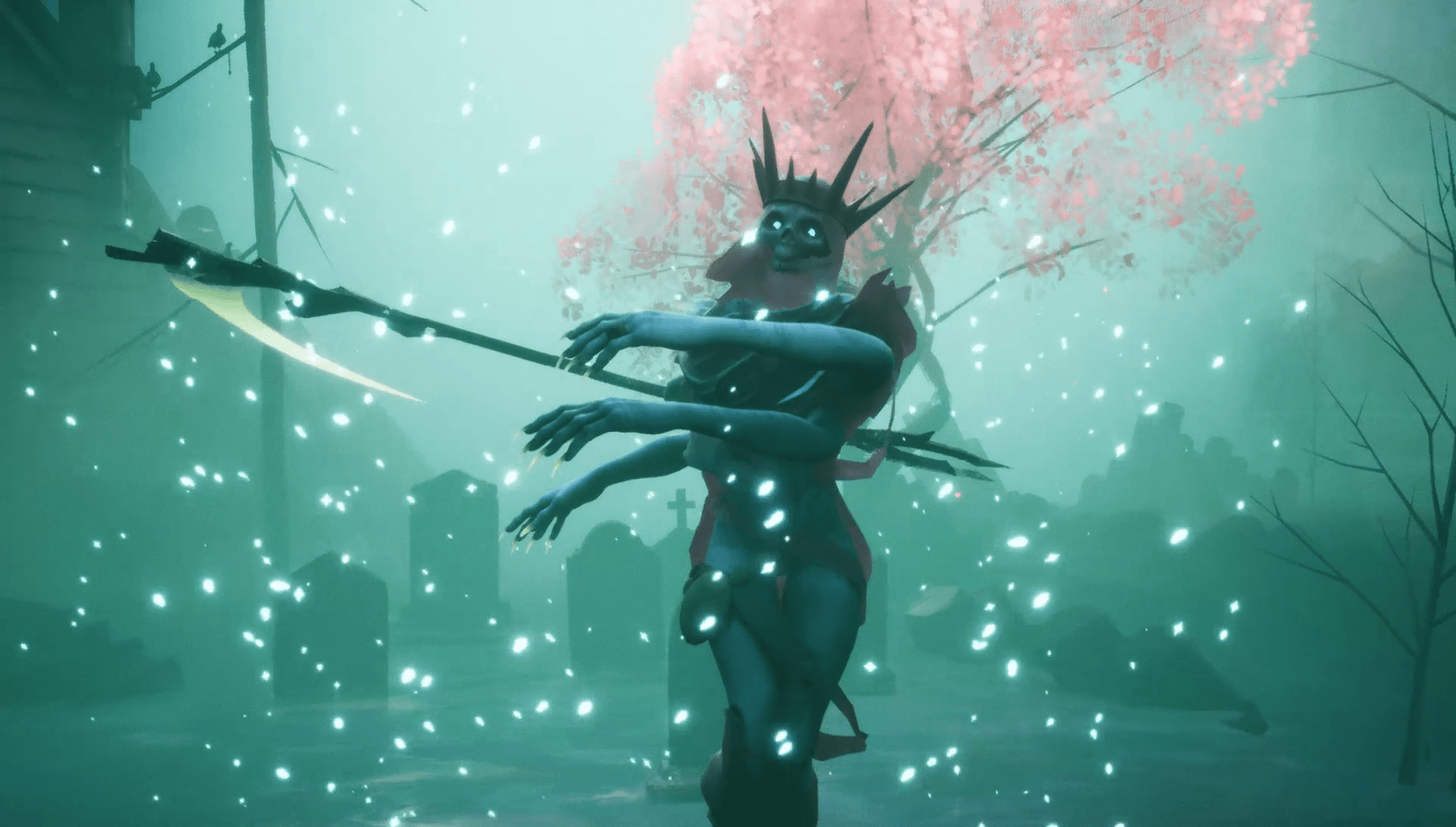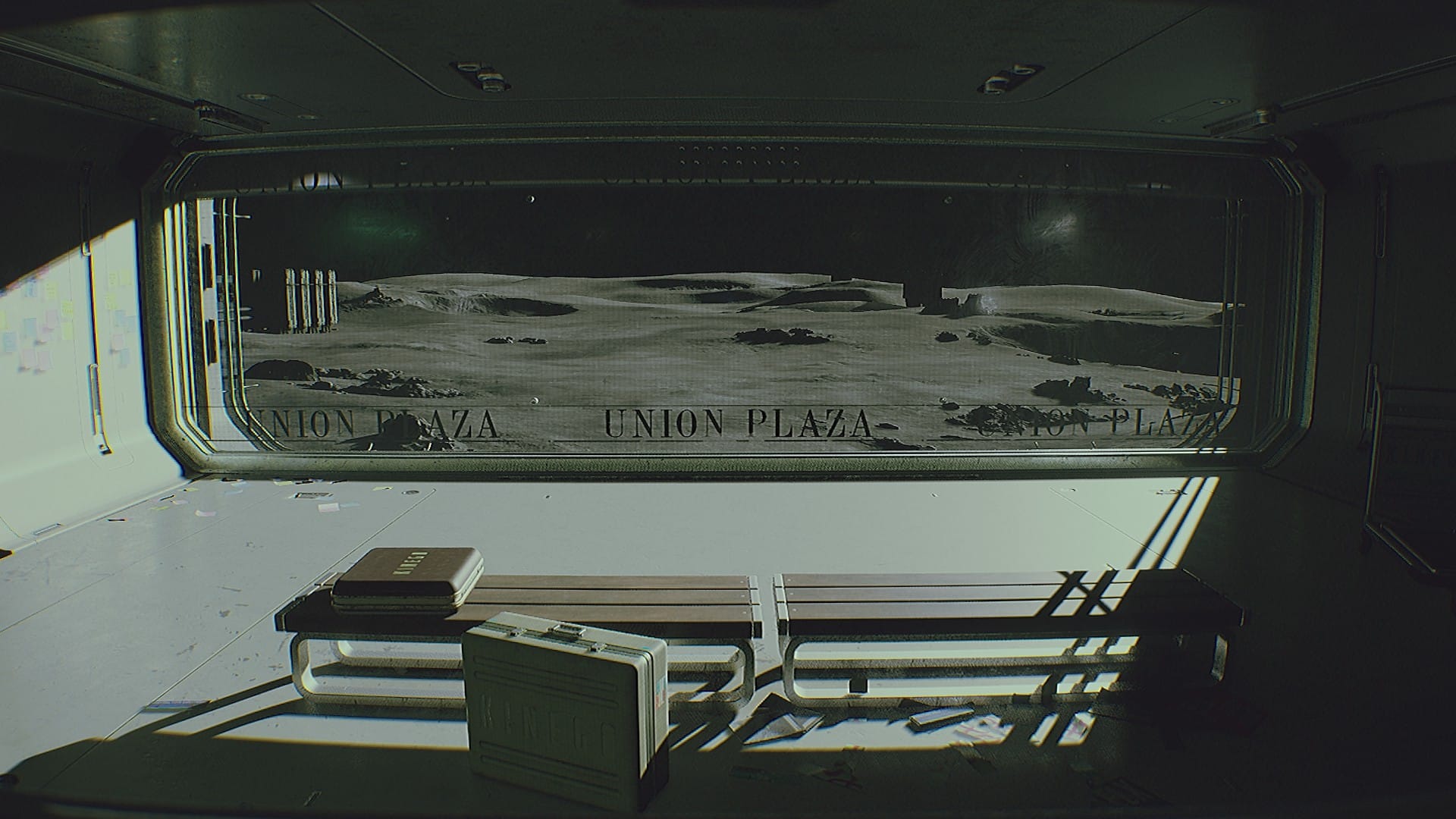Roguelikes are the sort of games that let you know quickly whether you’re going to click with them or not. The fast gameplay loop of successes and failures make it easy to tell whether each one’s particular approach will work for you. Dreamscaper is slightly different. It has a strong foundation — good combat, a strong core gameplay loop, and a ton of build variety that keeps each run feeling fresh — but it’s a bit slow to gain momentum, making something you need to invest some time into before it begins to flourish.
Dreamscaper is an isometric action game wherein you fight the nightmares of Cassidy, a young woman who’s recently moved across the country and is having trouble settling into her new life. She also has some unresolved issues from back home that still weigh heavily on her. It’s a story of grief and depression and the struggles therein to overcome them. The actual story itself is light, keeping most of the development confined to conversations you can have with people around town who Cassidy befriends, providing a small window into her life and the general goings on happening in the background between runs, and the few brief interludes that play upon finishing each area of the dreamscape for the first time.
Dreamscaper‘s focus lies on the action in the dream world. Every time Cassidy calls it a day, she’s beset by nightmares that manifest as varying forms of monsters that appear throughout dream versions of locales which carry significance in her life: her hometown, the big city she moved to, the old camping ground she and her family used to visit every year, and so on. Each layer of her dreams delves further into Cassidy’s psyche, forcing her to confront memories and events that still haunt her. This is at most apparent in the bosses acting as manifestations of her current mental state: fear, isolation, regret, resentment, etc.
The combat feels good. It’s a touch slower than some of its contemporaries, emphasizing a slightly more deliberate pace that takes some getting used to. Case in point, the attack animations often have a fairly pronounced startup and recovery, making it difficult to simply button mash to pummel foes into oblivion without risk of overextending. Instead, Dreamscaper gently pushes you toward timing your button presses to increase your damage output. Between attacks, Cassidy will flash white, signaling the timing to deal a stronger attack. Same applies to most ranged attacks. If you’ve played any of Supergiant Games’ works, the same mechanic appears in their games, although it’s applied widely here as opposed to specific functions.

I wasn’t making much progress for a while because I wasn’t really making great use of all of Cassidy’s abilities. I was playing Dreamscaper like a standard action game where I’d just dodge and attack. I wasn’t nearly making good enough use of my ranged attack and my skills, nor was I using the shield enough, whether for just reducing damage or parrying the occasional strike or projectile. I treated it as though I were playing Dead Cells or Hades where constantly being mobile was key to survival. Dreamscaper isn’t nearly as fast and frenetic as those games, but, in fairness, when you’ve got multiple foes on your tail and a couple different turrets shooting at you, it’s easy to fall into those sorts of habits. Haven’t played an action game like this where defense was an actual valid option in a while, so it’s difficult to re-calibrate. My usual instinct is to avoid damage altogether as much as possible rather than stand my ground block or deflect attacks. After all, if I’ve got a good dodge roll might as well use it, you know?
Once I got the hang of it, though, everything clicked into place almost immediately. The ebb and flow of combat shines once you have a good grasp on how best to use all of Cassidy’s abilities. Quickly darting between foes switching between close and ranged attacks, deflecting projectiles or parrying strikes all the while never stops feeling cool and satisfying to pull off. Especially so when you can do so in concert with the right abilities to vanquish everything in front of you almost instantly.
Dreamscaper is all about finding very strong builds and using them to their fullest. The game actively encourages it with how elemental attacks and status afflictions interact. Opposing elements like fire and ice or lightning and water easily set up foes for critical hits, while statuses like oil and wind slow down or naturally set targets up for increased critical chances, respectively. How useful each one is at any given moment depends on how much you can build around what you’ve got. In a lot of my early runs, I wasn’t thinking too hard about it because I was getting by without those sorts of optimizations. But as I got deeper, that became priority number one. Instead of just using whatever weapons I liked the feel of, I chose my equipment based on their abilities and how they paired with my current set of skills and how I could potentially plan my build around them.

My most powerful builds usually involve having some sort of elemental combo and a ton of companions — familiars that float around Cassidy and deal various sorts of additional damage with each strike, perhaps summon a shield or two even — to destroy anything in just a few hits. Bosses would go down in mere seconds with the right setup. It’s an extremely satisfying feeling to turn the tables so dramatically given how easily they can do the same to you if you aren’t prepared.
I also wasn’t making much progress because the actual progression can be a touch slow. Between runs, you roam the city chatting up folks and spending currencies to upgrade Cassidy’s own stats and abilities as well as alter the dreamscape itself. Forging friendships with folks allows you to unlock their particular “influence” in the dreamscape, which grants particular bonuses such as increased ability damage, higher critical rate, better defense, and so on. The stronger her bonds are, the stronger those influences become. Meditating allows you to increase Cassidy’s stats, sketching unlocks new weapons and keepsakes (trinkets that grant various passive and active buffs), and daydreaming unlocks new rooms in the dreamscape. Standard stuff.
A lot of the upgrades advance slowly, though. A good number of them advance one percentage point at a time and quickly become expensive. In the early goings especially, it makes the actual improvements feel slight at best and insignificant at worst. If something moves at five points at a time, that’s at least some kind of improvement at every level. Even if I can’t directly see or feel the benefits, it at least appears like I’m getting something worthwhile out of it. An extra five percent health boost may not be much in the grand scheme, but it could also be the difference between surviving a hit or not. When I’m only advancing one point at a time, it’s like why bother unless I’ve already banked enough currency to buy multiple points because it’s not like I’m not going to see any return for a while yet. This is compounded by how little of each upgrade currency you earn early on, which makes already slow progression feel that much more sluggish.

It picks up once you’ve finished the second zone and unlock the option to increase the intensity of the nightmares. Enemy numbers and strength, the amount of damage you receive, the size of each zone, and the strength of bosses can all be adjusted before embarking on each run. At first, you can only advance each one up one level for a maximum of 20% more earnings. Once I got that, it felt like I was making much faster progress on my upgrades, which in turn gave me a better shot at surviving longer, which in turn meant I was doing more runs per session.
It’s very much a game that takes a bit of investment for it to shine. The early goings were fine because the fundamental mechanics felt good to play with, but it didn’t truly hook me until I was a ways in once I had obtained a decent suite of upgrades and was reliably making it past the first couple of zones and the gameplay loop had finally settled into place. Up until that point, I wasn’t completely bought in the way I thought I would be. Replaying the first couple of areas over and over with little to show for it didn’t feel great. The bits in the real world were good, but I was limited by how much I could do in the beginning. I was unlocking weapons and skills quickly, but it didn’t mean much when I wasn’t able to play around with them and consider how my build for that run was taking shape. It was a slow start. But once things properly got going, I was hooked.
Dreamscaper rewards patience. It may not have immediately pulled me in, but sticking with it was ultimately worth it. In part because the wait wasn’t huge, but also because the majority of my time with it has been worthwhile. It’s a very satisfying game to play once it finds its rhythm. Roguelikes are a crowded genre with plenty of games vying for attention, and Dreamscaper is one definitely worth your attention.





